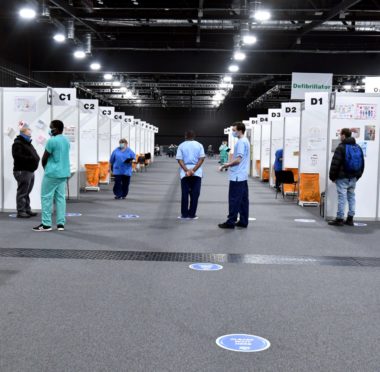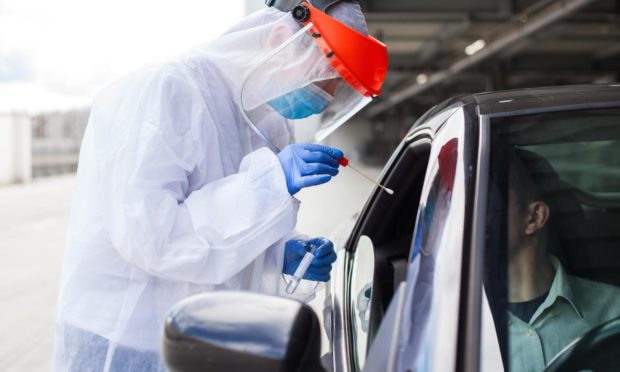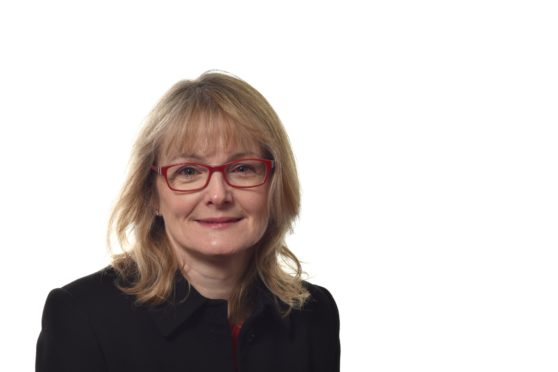The number of new daily Covid-19 cases in Aberdeen has increased for the third week in a row, with health bosses suggesting it could be down to more people going back to work.
The seven day count for the city on March 15 was 102 – a rise of 31% from the previous week and 38% higher than a month ago.
In her report, Susan Webb, NHS Grampian’s director of public health, said rates in Aberdeen remain lower than in Scotland as a whole at 44.6 per 100,000 compared to 73.4 for Scotland.
But this advantage has narrowed, she added. A month ago rates in Aberdeen were three times lower than Scotland, the difference is now less than twice.
She said the rise in detected cases could indicate an increase in broad community transmission and based on evidence from the Scottish Contact Survey, patterns of behaviour are changing in different age groups and settings.
Ms Webb states in her report: “This increase in detected cases cannot be explained by known events or outbreaks and indicates an increase in broad community transmission.
“Limiting the frequency of social interaction has been one of the main ways to reduce spread of the virus. Drawing from the Scottish Contact Survey, patterns of behaviour are changing in different age groups and settings. Over the last two weeks, the largest increase in interactions is between 30-50 year olds, where contacts within the work setting have increased by 20%. An increase in interactions in people under 18 years is also apparent, coinciding with the phased return of pupils to schools.”
All pupils in P1-P3 and pre-school children returned to the classroom full-time on February 22. Senior secondary pupils were also allowed to return partially and on a limited basis to complete work for their exams.
Ms Webb added changes were also observed in those with underlying health conditions aged 60-64 who have been vaccinated.
Coronavirus in Scotland – track the spread in these charts and maps
She said: “Locally, data from contact tracing shows an increasing number of close contacts associated with a positive case over the past two weeks, which suggests that that the national pattern of increasing interactions is just as applicable in Aberdeen as it is across Scotland.
“This is an indication that we may be at a pivotal point in contact levels, and one which could drive a change in the way the pandemic unfolds.”
Lockdown restrictions are set to ease further from April 2, first with the stay at home rule ending and ‘stay local’ advice beginning.
From April 5, college and university students can return to campus and hairdressers and garden centres allowed to reopen.

Later that month, on April 26, all shops are due to reopen and cafes, bars and restaurants can serve food and alcohol outdoors until 10pm.
In Full: Here’s when hairdressers, garden centres, pubs and restaurants will reopen in Scotland
Ms Webb said: “The eased restrictions may not seem like much, but socialising outdoors with two people from another household and the opening of some retail services increases the opportunity for the virus to circulate. Keeping vigilant at each stage as we exit lockdown improves the chances of keeping to the government’s timetable and the hope we all have for a summer of much greater freedoms.”
Vaccination progress

Almost 71,000 residents of Aberdeen – 36.6% of the total adult population – have received the first dose of vaccination, the report states.
The Press and Journal reported earlier this month the coronavirus vaccination roll-out in Grampian had gone from second fastest to second slowest in the country within a matter of weeks.
Ms Webb said Aberdeen’s “demography and younger population explains the seemingly lower population coverage”.
She said across Grampian, uptake of the vaccination by cohort is high.
“There are pockets of the population in the city where we are focusing attention to increase uptake and focus groups are taking place next week to understand the particular barriers affecting people’s choices.”
She added NHS Grampian receives 10.38% of the Scottish vaccine allocation and has so far delivered 12.1% of the total Scottish first dose vaccinations.
“Vaccine stocks remain changeable but should not impact on the delivery of the >50 programme,” she said.
“We are one of the three boards who will be using the new vaccine, Moderna, with use expected to begin in April.”

